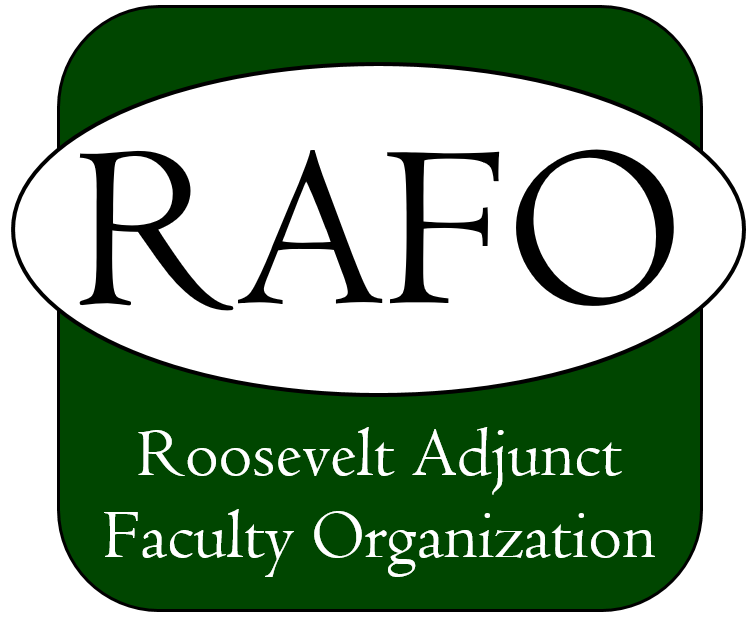Howard Bunsis, Professor of Accounting, Eastern Michigan University.
Like his presentation in 2012 sponsored by AAUP, Bunsis took financial reports and 990s to form a roadmap and ratio analysis of where Roosevelt University is today. Opening comments conveyed three main criticisms with Roosevelt: the overall financial state is worse now than in 2012, the main reason for the financial state remains a decline in enrollment, and Roosevelt lacks transparency in their communications with the staff and faculty. Bunsis did not place much emphasis on the operating budget, as the budget has little to do with the financial outlook. The following are major points of his analysis:
- Looking at the operating budget of $118 million, the main areas of incoming funds were–73% from tuition, 8% from auxiliary funds (housing, dining, and bookstore), 9% from gifts, grants, and contracts, and 7% from investments.
- Roosevelt University’s bond rating has been lowered. Moody’s lowered the bond rating from Ba1 to Ba2. There are a few reasons for this downgrade, including declining enrollment, debt service, and low reserves. RU has been running a deficit for the last four years. A large measure of the problem seems to be the debt. However, they listed other reasons for the downgrade, including low 2016 enrollment number, management blaming the MAP grant funding on this issue, and the transition of several senior leadership positions within the upper administration.
- At this point, Roosevelt University has interest payments that are much greater than the payments toward the principle. For example, for the years 2008, 2009, and 2010, all payments were solely on interest; jumping ahead, in 2016, RU paid $14 million on interest and a little over $2 million on principle. While Bunsis acknowledges that debt service is a problem, he asserted that it did not justify the cuts to faculty.
- In 2016, RU has a liquidity level of $130 million. However, the endowment only equals $82.9 million, increasing to this level from $80.2 million in 2011. This level of endowment supports between $3 – 4 million in student support and scholarships. The causes of the low endowment growth remains levels of giving have not increased, the consecutive investments, and overall low contributions.
- From the 2016 audited financial statements, the summary includes three main areas within the university. The university brought in $116 million with expenses of $119 million. The RUDC (Roosevelt University Development Company) ran a deficit of $400,000 while the Auditorium Theater had a revenue line of $1.2 million but costs $2.3 million to run the theater each year. RU has a 4.9% deficit right now.
- Total enrollment from 2016 equals 4,700 students in comparison to 2009 with 7,642 students. Undergraduate part-time students have decreased by over 67% from 2008–1,752 students to 2016 with 495 students enrolled.
- Tuition discounts contribute to the financial picture of RU as well. In 2008, students were granted a 13.7% discount on tuition in the form of scholarships while in 2016 on average students received 25.7%.
- Instructional expenses amount to 49.2% of the total cost of running the university, with 20.9% of the expenses covering the upper administration. Roosevelt University spends $3.8 million less on salaries than its peers. The peer group includes the following institutions: Aurora University, Benedictine University, Columbia College, Elmhurst College, Lewis University, Loyola, DePaul, Robert Morris College, and National Lewis University.

